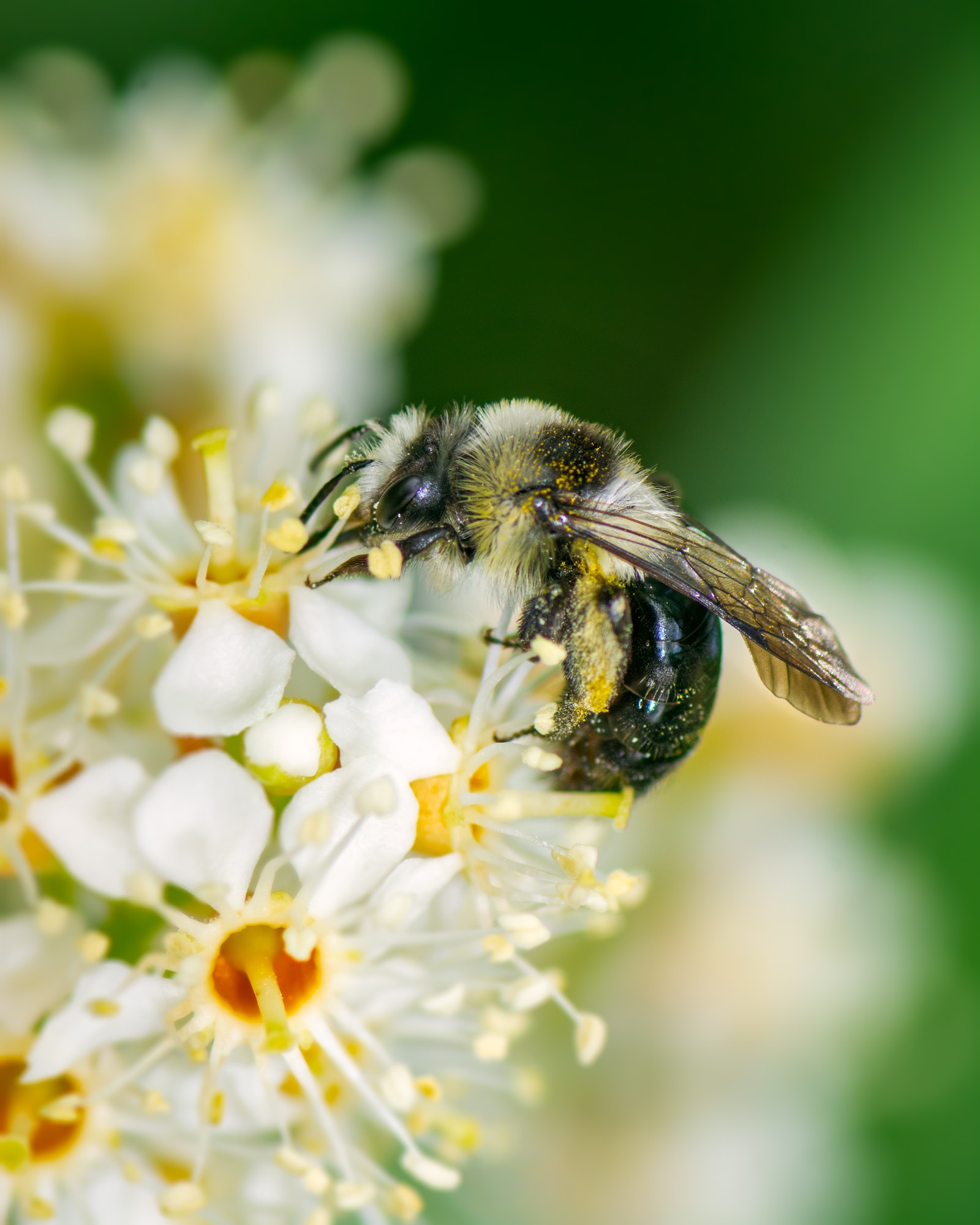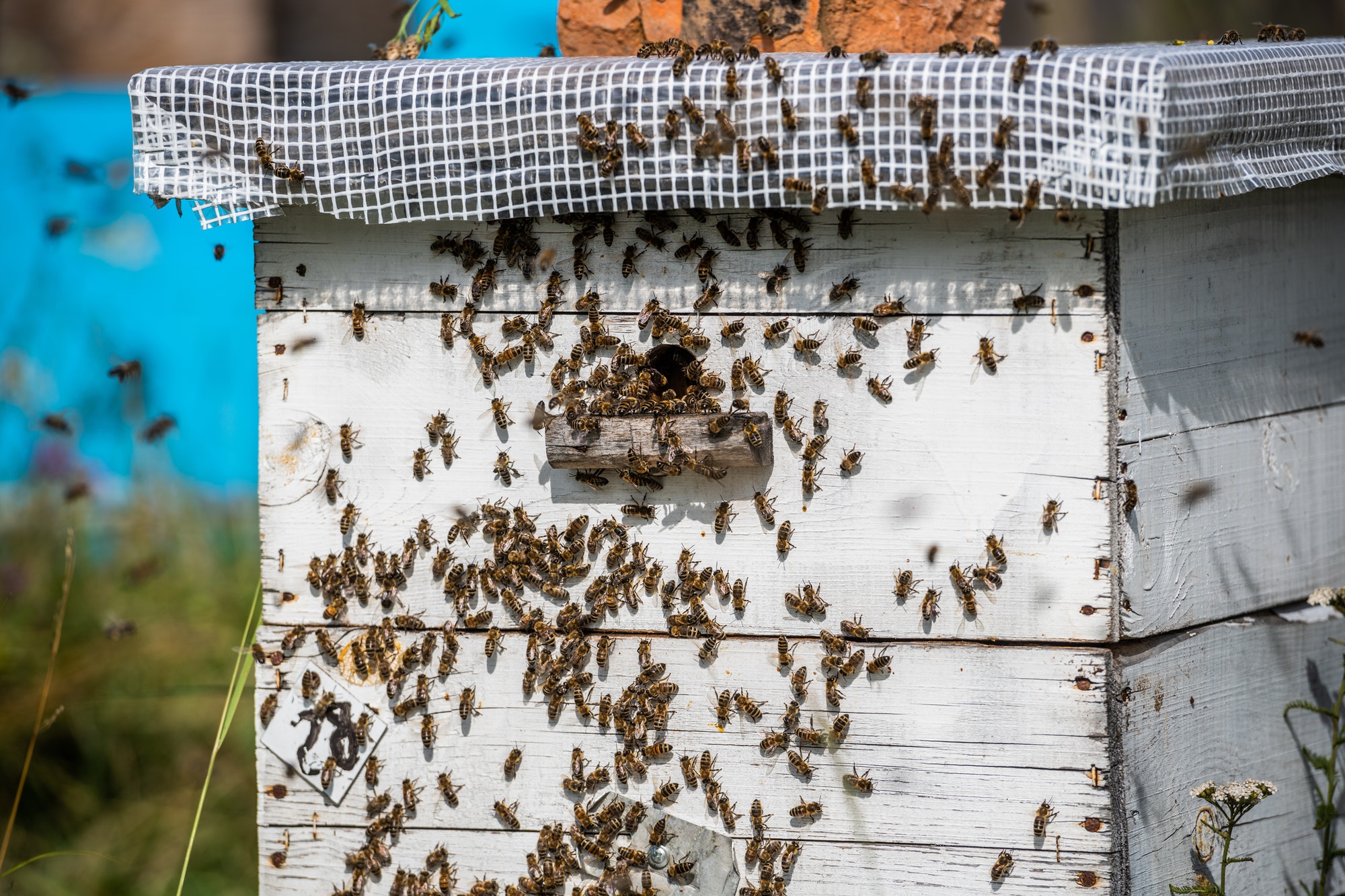Why Bees Are Important For Natural Ecosystems
Bees live everywhere. In fact, there are around 20,000 species of bees within 443 genera (Winfree 170-172) distributed on every continent except Antarctica (Gillingham 2). Angiosperms, or flowering plants, are just as widespread, and comprise about 90 percent of all the Plantae kingdom’s organisms (Armstrong). Wherever there are angiosperms, there are bees. This is because bees and most angiosperms rely on each other for survival.
Bees are also more effective at pollination, or transferring pollen between angiosperms’ anthers and stigmas to produce seeds (Armstrong), than any other pollinators. Therefore, bees are important for natural ecosystems because they are both crucial for pollinating angiosperms and are more effective at pollinating them than any other organism.
Bees as they exist today would not exist without angiosperms, and angiosperms as they exist today would not exist without bees. Products from flowers are vital for bee survival. All life stages need pollen and nectar for nutrition; larvae need flower oils as well. Bees also use waxes and perfumes from flowers for sexual attraction and flower resins to build their nests (Danforth 15118).

This reliance suggests that bees came into existence around the same time as angiosperms. It is important to note that beetles, not bees, pollinate primitive angiosperms, further suggesting that bees developed to use angiosperm resources (Michener 100). In addition, some angiosperms rely on bees for pollination.
For example, the angiosperm Lathyrus vernus cannot reproduce without receiving visits from pollinators, particularly bumblebees (Ehrlén 653). Bees evolved to maximize the benefits of angiosperms, and some angiosperms have since developed specifically for bee pollination, making these two disparate groups of organisms rely on each other for ecological stability.

Not only do bees have a close relationship with angiosperms, but they are also nature’s most effective pollinators. A 2015 study by The Royal Society monitored the number of pollen grains pollinators deposited onto the virgin stigmas of five different angiosperm species. Bees deposited an approximately 4 times greater mean number of pollen grains than the combined mean of all other pollinators observed, such as ants and hoverflies (Ballantyne 6). This is because all bee life stages consume pollen and nectar. Meanwhile, other pollinators, like wasps, butterflies, flies, and beetles, only consume flower products, such as nectar and pollen, as adults.
Therefore, bees must gather more pollen than other pollinators to survive. To do this, bees make more trips between flowers over longer distances than other pollinators (Rhoades 77). This also helps distribute pollen between angiosperms, thus pollinating them. The reliance bees have on flower products makes them more motivated to gather and distribute pollen than other pollinators, making them the most effective at doing so.
Bees relying on flowers and their status as the most effective pollinators make them indispensable to natural ecosystems. Around 70 percent of angiosperms rely on insects for pollination (Danforth 15118). As the previous paragraph shows, that typically is bees. Without them, every ecosystem with angiosperms would collapse. Bees pollinate the majority of tropical tree species. Bee-pollinated plants in dry scrubland keep the ground from eroding. While wind usually pollinates trees in temperate forests, bees pollinate smaller bushes and wildflowers (Michener 4). Even a reduction in the number of bees is harmful. Less bee pollination can cause inbreeding and reduced seed output, reducing angiosperm populations (Goulson 172). With lower angiosperm abundance, other organisms that rely on angiosperms for food and cover would suffer. Natural ecosystems rely on angiosperm pollination, and therefore bees, to thrive.
Human activities threaten wild bee populations. A model produced by the National Academy of Sciences indicated that wild bee populations decreased in 23 percent of the United States between 2008 and 2013 (Koh 142). While habitat loss is the greatest cause of this decline, pesticides, disease and climate change play a role as well (Koh 140). Restoring entire grassland habitats for bees, while often the goal of conservation efforts (Goulson 210) may seem too large of an undertaking for an individual. That doesn’t mean that it is impossible to help bee populations at home. Even small patches of habitat, like suburban gardens, may support bees. (Winfree 173). Angiosperms that have a long blooming period and are appealing to many bee species are ideal. In fact, only a few different plant species in a given area account for most bee visits (Winfree 180). Thus, anyone with a yard can support one of nature’s most crucial organisms.
Bees are vital for natural ecosystems. They have evolved to rely on angiosperms, and the majority of angiosperms rely on them. They are also more effective at pollinating than any other pollinator. Therefore, the decline in bee population negatively affects angiosperm abundance and the lives of all organisms that use angiosperms.
Author: Logan McDowall
Portland State University
Works Cited
- Armstrong, Wayne P. “Diversity Of Flowering Plants.” Wayne’s Word, Palomar College, Mar. 1998, www2.palomar.edu/users/warmstrong/trmar98.htm.
- Ballantyne, G., et al. “Constructing More Informative Plant–Pollinator Networks: Visitation and Pollen Deposition Networks in a Heathland Plant Community.” Proceedings of the Royal Society B: Biological Sciences, vol. 282, no. 1814, 7 Sept. 2015, pp. 1–9. JSTOR, doi:10.1098/rspb.2015.1130.
- Danforth, B. N., et al. “The History of Early Bee Diversification Based on Five Genes plus Morphology.” Proceedings of the National Academy of Sciences, vol. 103, no. 41, 10 Oct. 2006, pp. 15118–15123. JSTOR, doi:10.1073/pnas.0604033103.
- Ehrlén, Johan, and Ove Eriksson. “Pollen Limitation and Population Growth in a Herbaceous Perennial Legume.” Ecology, vol. 76, no. 2, Mar. 1995, pp. 652–656. JSTOR, doi:10.2307/1941223.
- Gillingham, Allan. “Beekeeping.” Te Ara: The Encyclopedia of New Zealand, Ministry for Culture and Heritage, 24 Nov. 2008, teara.govt.nz/en/beekeeping.
- Goulson, Dave. Bumblebees: Behaviour, Ecology, and Conservation. 2nd ed., Oxford University Press, 2012. ProQuest Ebook Central, ebookcentral.proquest.com/lib/psu/detail.action? docID=472276.
- Koh, Insu, et al. “Modeling the Status, Trends, and Impacts of Wild Bee Abundance in the United States.” Proceedings of the National Academy of Sciences, vol. 113, no. 1, 5 Jan. 2016, pp. 140–145. JSTOR, doi:10.1073/pnas.1517685113.
- Michener, Charles D. The Bees of the World. 2nd ed., Johns Hopkins University Press, 2007. ProQuest Ebook Central, ebookcentral.proquest.com/lib/psu/detail.action? docID=3318383.
- Rhoades, Paul. “The Importance of Bees in Natural and Agricultural Ecosystems.” National Proceedings: Forest and Conservation Nursery Associations – 2012, by D. L. Haase et al., U.S. Dept. of Agriculture, Forest Service, Rocky Mountain Research Station, 2013, 77–79. Proceedings (P), www.fs.usda.gov/treesearch/pubs/45551.
- Winfree, Rachael. “The Conservation and Restoration of Wild Bees.” Annals of the New York Academy of Sciences, vol. 1195, no. 1, 3 May 2010, pp. 169–197. Wiley Online Library, The New York Academy of Sciences, doi:10.1111/j.1749- 6632.2010.05449.x.








